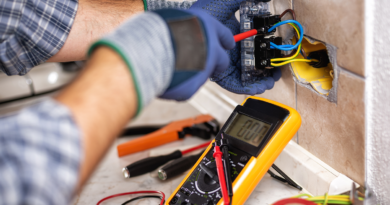What To Do When Kitchen Sink Not Draining Properly?: Reasons And Solutions Explained
A clogged or slow-draining kitchen sink can cause the water to get stagnant creating foul odors, and even potential damage to your plumbing system. Also, when you see kitchen sink not draining properly and water backing up, it can be truly frustrating.
Hence, you must understand the reasons behind a kitchen sink not draining and address the issue. It can save you time, money, and headaches. A kitchen sink may get clogged due to food debris, clogged P-trap and improper garbage disposal.
Thus, we will explore common causes for kitchen sink drainage problems and provide effective solutions to help you restore proper drainage. Read more
Reasons for a Kitchen Sink Not Draining Properly
When your kitchen sink backs up and water doesn’t drain, it can freak you out. However, with little observation you can find the cause of water backing up in kitchen sink to solve it ASAP.
Food Debris:
One of the most common causes of a clogged and not-functioning kitchen sink is the accumulation of food debris. Over time, small food particles, grease, and oil can build up in the drainpipe, causing blockages and restricted water flow.
Also, many homeowners will not clean the sink properly. It also causes the debris to accumulate over them and block the drainpipe. You can avoid it by regularly cleaning the kitchen sink ensuring that no food particles go through the drainpipe.
Clogged P-Trap:
The P-trap is a curved section of pipe located beneath the sink that. It is designed to prevent sewer gases from entering your home. However, it can also collect debris and become clogged, leading to drainage issues.
The P-trap gets clogged if you continuously throw away smaller food particles through the sink. It is a common but harmful practice that most homeowners perform. And eventually, they cause the P-trap to get blocked.
Faulty Garbage Disposal:
Many modern-day kitchen sinks are equipped with a garbage disposal unit. For such models of the kitchen sink, a malfunctioning or clogged disposal can contribute to poor drainage.
Over time, the disposal blades can become dull or jammed. As it happens, it will prevent efficient grinding and disposal of food waste. Also, bigger food particles may damage the garbage disposal unit which will need repairing or replacement. Click here to learn more.
Mineral Buildup:
Mineral deposits, such as limescale, can accumulate over time in the pipes and restrict water flow. This is particularly common in areas with hard water, where high mineral content can lead to blockages.
Solutions for a Kitchen Sink Not Draining Properly:
Once you identify the reason of water backing up in kitchen sink, you can fix it soon. From pouring in boiling water to using baking soda with vinegar, you can apply different techniques to unclog the sink easily.
Boiling Water:
A simple yet effective solution is to pour boiling water down the drain. Boiling water can quickly dissolve grease. It can also remove small blockages caused by food debris.
You must repeat this process a few times to get an unclogged and free-flowing kitchen sink.
Baking Soda and Vinegar:
You may also create a natural drain cleaner by combining baking soda and vinegar.
- First, throw down a cup of baking soda through the drain.
- Then, follow it up with a cup of vinegar.
- Now, wait for a couple of minutes to allow white vinegar and baking soda react.
The chemical reaction will break down grease and clear blockages. Once the solution fizz for a few minutes, flush the drain with hot water. It is ideal to remove minor and medium debris and grease from the kitchen sink.
Plunger:
You can use a plunger to effectively and quickly dislodge stubborn clogs. You will, however, have to ensure there is enough water in the sink. It is necessary to cover the plunger. Once you have enough water in the kitchen sin, place the plunger over the drain.
Now, you have to vigorously plunge up and down the sink with the plunger. It will create a suction which will remove the blockages.
Plumbing Snake:
For more severe clogs, the plunger system may not work. In such cases, you will need a plumbing snake.
- Insert the snake into the drain until it reaches the obstacles
- Then, start rotating it to break up or remove the obstruction.
The plumbing snake method is particularly useful for clearing blockages deeper in the pipes.
Remove and Clean the P-Trap:
At times, the problem of clogged kitchen sink may persist longer. So, you might need to remove and clean the P-trap. Place a bucket beneath the trap to catch any water or debris, then use a wrench to loosen the slip nuts and remove the trap. Clean it thoroughly, removing any accumulated debris, before reinstalling it.
Conclusion:
A kitchen sink not draining properly can be a terrible experience if not fixed quickly. So, you must act to restore proper drainage and prevent future clogs for the kitchen sink.
Besides unclogging the kitchen sink, you must practice regular maintenance for the sink. It includes keeping food debris and grease out of the drain. You should, further, consider preventive measures such as using drain covers to catch large particles.



